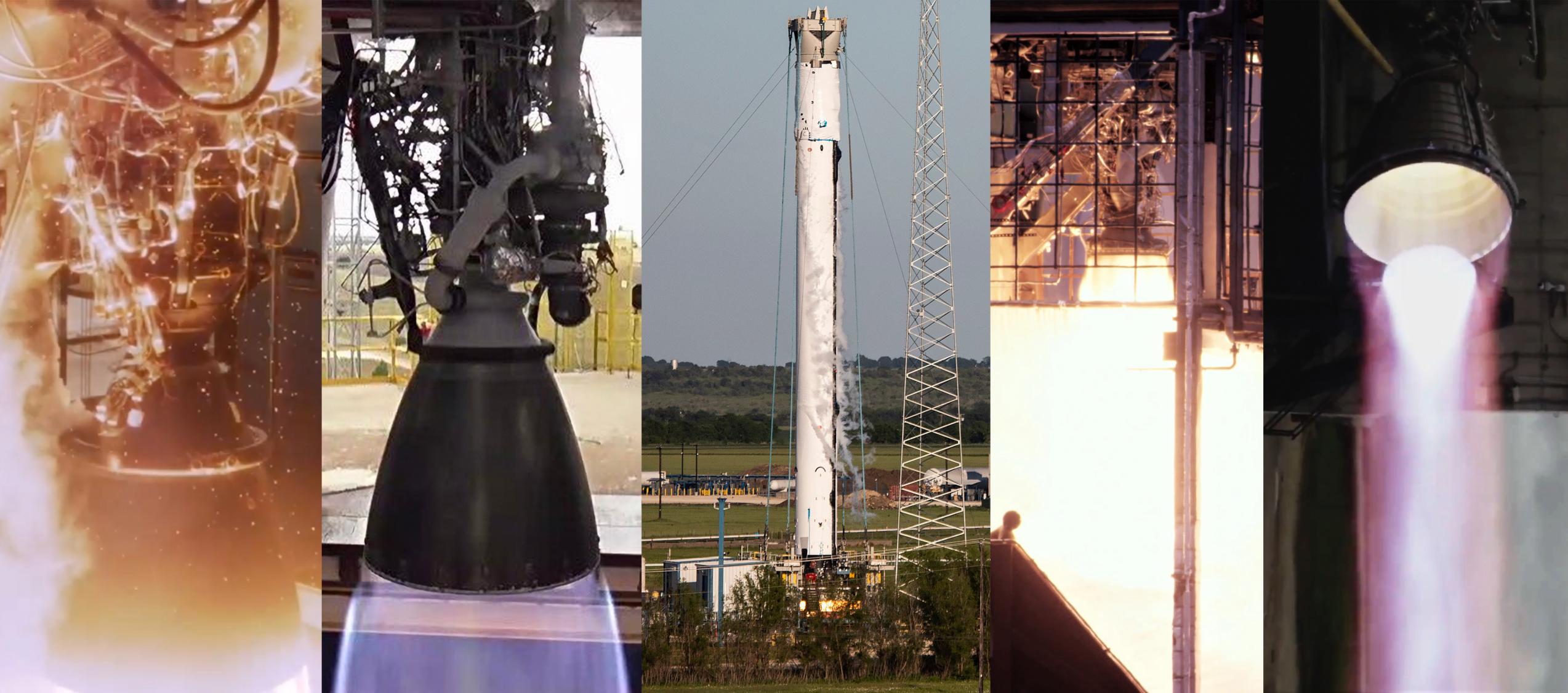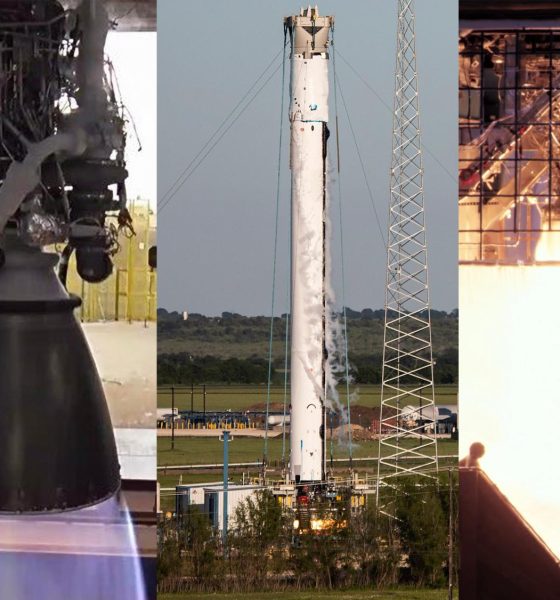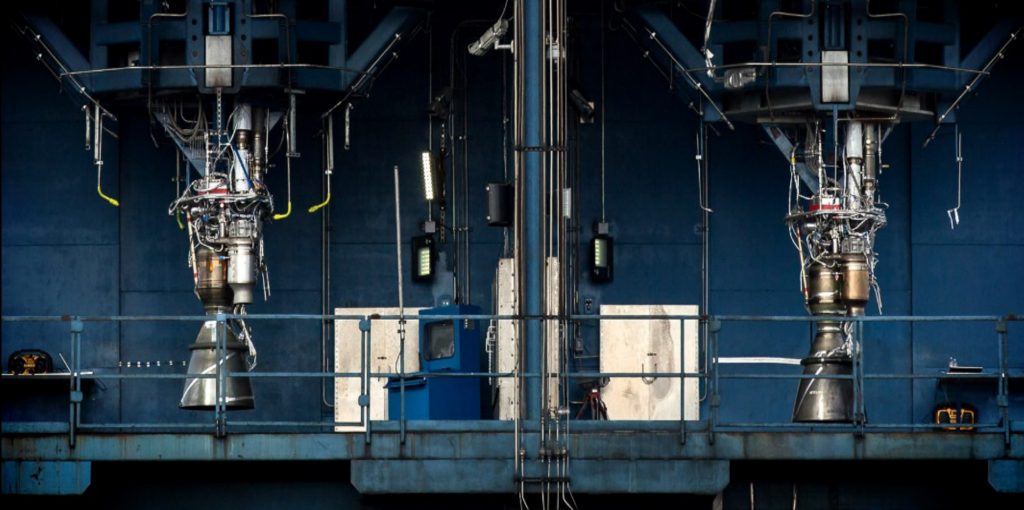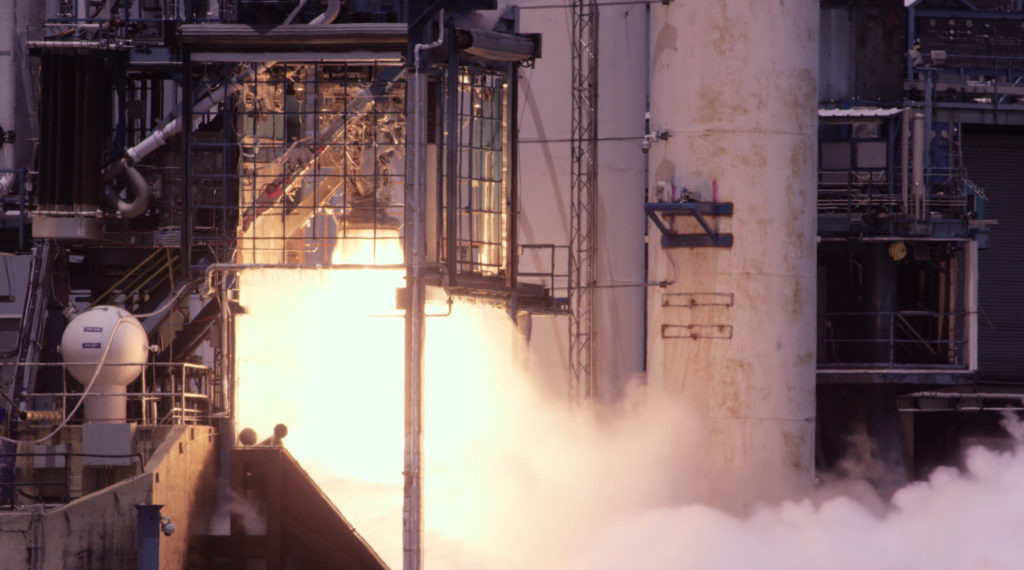

News
SpaceX Texas test HQ fires up a dozen Falcon, Starship rocket engines in six hours
Though it often falls under the radar relative to SpaceX’s high-profile Boca Chica Starship hub, another even more important Texas outpost appears to be busier than ever testing the rocket engines and boosters instrumental to all SpaceX operations.
Famous for occasionally supporting half a dozen or more rocket tests on busy days, SpaceX’s McGregor, Texas facilities showed off exactly that kind of rapid-fire activity on Friday, March 19th, flexing the sheer variety and volume of rocket hardware liable to pass through its gates.
Located on the grounds of a former US military explosives factory, SpaceX’s McGregor, Texas rocket development and test facilities have been testing Falcon, Dragon, and Starship parts and supporting each program’s development for a decade and a half. After being fabricated and assembled in Hawthorne, California, virtually every single active propulsive component SpaceX has ever flown has spent some amount of time in McGregor.
For boosters, every cold gas maneuvering thruster is qualified in Texas before being sent back to Hawthorne for final installation. Each stage’s nine Merlin 1D engines are individually tested in McGregor, shipped back to Hawthorne, installed on a booster, shipped back to McGregor, and static fired as an integrated first stage before SpaceX deems a Falcon 9 or Falcon Heavy core ready for flight. The exact same process (separate engines and thruster qualification followed by integrated vehicle testing) is performed with Falcon upper stages and their Merlin Vacuum engines, as well as all Dragon spacecraft and their Draco (and SuperDraco) thrusters. The same is true for the two Raptor engine variants and cold-gas thrusters that power Starship.
On March 19th, nearly all of those different engines and vehicles – and the separate stands used to test each of them – came together for an exceptionally busy day at McGregor. According to local resident Reagan (@bluemoondance74), who lives within earshot of SpaceX’s extraordinarily busy rocket testing HQ, at least five unique tests were performed in just six hours – all but one of which was squeezed into the last ~125 minutes.
Around 2:40 pm, an unknown test – possibly a Merlin Vacuum (MVac) or Merlin 1D (M1D) engine – kicked off the salvo. Four hours later, SpaceX completed arguably the most significant test of the day, firing up the first Falcon Heavy center core to head to McGregor in almost 24 months. Assuming that static fire was a success, the booster will be inspected, have its tanks cleaned, and be shipped to Florida to complete the first stage of SpaceX’s fourth Falcon Heavy rocket for a launch as early as July.
An hour and a half after the Falcon Heavy center core’s static fire, SpaceX fired up a Raptor engine (either a sea level or vacuum variant), followed by another likely M1D or MVac test just minutes later. Finally, at 8:52 pm, SpaceX ignited a second Raptor engine at an entirely separate vertical test stand (known as the tripod stand) recently modified to support testing Starship engines in a more flight-like configuration. Altogether, assuming no repeated tests, SpaceX effectively tested a booster and 13 (9+4) rocket engines in a little over six hours.





More likely than not, one or both of those Raptors will soon find themselves on a Starship or Super Heavy prototype in Boca Chica. The M1D and/or MVac engines will assuredly find a place on a future Falcon booster or upper stage. The Falcon Heavy center core (B1065 or B1066) is scheduled to launch as early as July 2021 and will be the first of its kind to fly in an intentionally expendable configuration. Another Falcon Heavy center core – possibly B1067 – will likely also find itself in McGregor within the next few months for the rocket’s fifth launch, scheduled no earlier than (NET) October 2021.
All told, SpaceX’s McGregor rocket testing HQ is about as busy as – if not busier than – it’s ever been as the company works towards an unprecedentedly ambitious 48-launch 2021 manifest, builds and flies at least four Dragon spacecraft, and pursues an even more ambitious effort to begin orbital Starship launches this summer. Quieted away in rural Texas, McGregor may largely go unnoticed but its infrastructure remains as integral as ever for virtually every single SpaceX project – past, present, and future.

News
Tesla FSD fleet is nearing 7 billion total miles, including 2.5 billion city miles
As can be seen on Tesla’s official FSD webpage, vehicles equipped with the system have now navigated over 6.99 billion miles.

Tesla’s Full Self-Driving (Supervised) fleet is closing in on almost 7 billion total miles driven, as per data posted by the company on its official FSD webpage.
These figures hint at the massive scale of data fueling Tesla’s rapid FSD improvements, which have been quite notable as of late.
FSD mileage milestones
As can be seen on Tesla’s official FSD webpage, vehicles equipped with the system have now navigated over 6.99 billion miles. Tesla owner and avid FSD tester Whole Mars Catalog also shared a screenshot indicating that from the nearly 7 billion miles traveled by the FSD fleet, more than 2.5 billion miles were driven inside cities.
City miles are particularly valuable for complex urban scenarios like unprotected turns, pedestrian interactions, and traffic lights. This is also the difference-maker for FSD, as only complex solutions, such as Waymo’s self-driving taxis, operate similarly on inner-city streets. And even then, incidents such as the San Francisco blackouts have proven challenging for sensor-rich vehicles like Waymos.
Tesla’s data edge
Tesla has a number of advantages in the autonomous vehicle sector, one of which is the size of its fleet and the number of vehicles training FSD on real-world roads. Tesla’s nearly 7 billion FSD miles then allow the company to roll out updates that make its vehicles behave like they are being driven by experienced drivers, even if they are operating on their own.
So notable are Tesla’s improvements to FSD that NVIDIA Director of Robotics Jim Fan, after experiencing FSD v14, noted that the system is the first AI that passes what he described as a “Physical Turing Test.”
“Despite knowing exactly how robot learning works, I still find it magical watching the steering wheel turn by itself. First it feels surreal, next it becomes routine. Then, like the smartphone, taking it away actively hurts. This is how humanity gets rewired and glued to god-like technologies,” Fan wrote in a post on X.
News
Tesla starts showing how FSD will change lives in Europe
Local officials tested the system on narrow country roads and were impressed by FSD’s smooth, human-like driving, with some calling the service a game-changer for everyday life in areas that are far from urban centers.

Tesla has launched Europe’s first public shuttle service using Full Self-Driving (Supervised) in the rural Eifelkreis Bitburg-Prüm region of Germany, demonstrating how the technology can restore independence and mobility for people who struggle with limited transport options.
Local officials tested the system on narrow country roads and were impressed by FSD’s smooth, human-like driving, with some calling the service a game-changer for everyday life in areas that are far from urban centers.
Officials see real impact on rural residents
Arzfeld Mayor Johannes Kuhl and District Administrator Andreas Kruppert personally tested the Tesla shuttle service. This allowed them to see just how well FSD navigated winding lanes and rural roads confidently. Kruppert said, “Autonomous driving sounds like science fiction to many, but we simply see here that it works totally well in rural regions too.” Kuhl, for his part, also noted that FSD “feels like a very experienced driver.”
The pilot complements the area’s “Citizen Bus” program, which provides on-demand rides for elderly residents who can no longer drive themselves. Tesla Europe shared a video of a demonstration of the service, highlighting how FSD gives people their freedom back, even in places where public transport is not as prevalent.
What the Ministry for Economic Affairs and Transport says
Rhineland-Palatinate’s Minister Daniela Schmitt supported the project, praising the collaboration that made this “first of its kind in Europe” possible. As per the ministry, the rural rollout for the service shows FSD’s potential beyond major cities, and it delivers tangible benefits like grocery runs, doctor visits, and social connections for isolated residents.
“Reliable and flexible mobility is especially vital in rural areas. With the launch of a shuttle service using self-driving vehicles (FSD supervised) by Tesla in the Eifelkreis Bitburg-Prüm, an innovative pilot project is now getting underway that complements local community bus services. It is the first project of its kind in Europe.
“The result is a real gain for rural mobility: greater accessibility, more flexibility and tangible benefits for everyday life. A strong signal for innovation, cooperation and future-oriented mobility beyond urban centers,” the ministry wrote in a LinkedIn post.
News
Tesla China quietly posts Robotaxi-related job listing
Tesla China is currently seeking a Low Voltage Electrical Engineer to work on circuit board design for the company’s autonomous vehicles.

Tesla has posted a new job listing in Shanghai explicitly tied to its Robotaxi program, fueling speculation that the company is preparing to launch its dedicated autonomous ride-hailing service in China.
As noted in the listing, Tesla China is currently seeking a Low Voltage Electrical Engineer to work on circuit board design for the company’s autonomous vehicles.
Robotaxi-specific role
The listing, which was shared on social media platform X by industry watcher @tslaming, suggested that Tesla China is looking to fill the role urgently. The job listing itself specifically mentions that the person hired for the role will be working on the Low Voltage Hardware team, which would design the circuit boards that would serve as the nervous system of the Robotaxi.
Key tasks for the role, as indicated in the job listing, include collaboration with PCB layout, firmware, mechanical, program management, and validation teams, among other responsibilities. The role is based in Shanghai.
China Robotaxi launch
China represents a massive potential market for robotaxis, with its dense urban centers and supportive policies in select cities. Tesla has limited permission to roll out FSD in the country, though despite this, its vehicles have been hailed as among the best in the market when it comes to autonomous features. So far, at least, it appears that China supports Tesla’s FSD and Robotaxi rollout.
This was hinted at in November, when Tesla brought the Cybercab to the 8th China International Import Expo (CIIE) in Shanghai, marking the first time that the autonomous two-seater was brought to the Asia-Pacific region. The vehicle, despite not having a release date in China, received a significant amount of interest among the event’s attendees.








